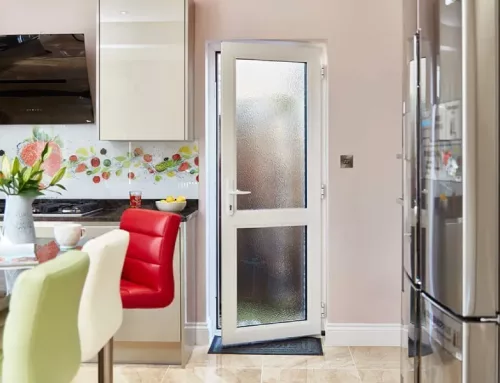uPVC Doors and Windows for Passive House Construction
Passive house construction has gained significant popularity in recent years due to its energy-efficient and environmentally conscious design principles. The selection of doors and windows plays a crucial role in achieving the desired energy performance and comfort levels in passive houses. uPVC (unplasticized polyvinyl chloride) doors and windows have emerged as a preferred choice for passive house construction, offering numerous benefits that align perfectly with the passive house concept.
Energy Efficiency and Thermal Performance
One of the primary objectives of passive house construction is to minimize energy consumption for heating and cooling. uPVC doors and windows excel in this aspect due to their excellent thermal performance. uPVC frames are designed with multiple chambers that act as thermal barriers, reducing heat transfer and preventing air leakage. Additionally, uPVC frames can be combined with high-performance glazing options, such as low-emissivity (low-e) glass and argon gas-filled double or triple glazing, to further enhance insulation and reduce heat loss. This combination of uPVC frames and advanced glazing solutions helps to achieve the high energy efficiency standards required in passive house construction.
Air Tightness and Moisture Control
Another critical factor in passive house construction is achieving a high level of air tightness. uPVC doors and windows are known for their excellent air sealing properties, ensuring minimal air infiltration and exfiltration. The precision engineering of uPVC frames and their ability to be tightly sealed during installation significantly contribute to maintaining the airtightness of passive houses. This not only improves energy efficiency but also enhances indoor comfort by preventing drafts and cold spots.
In addition to air tightness, uPVC doors and windows also offer effective moisture control. The inherent moisture resistance of uPVC frames helps prevent condensation and moisture-related issues, such as mold growth. This feature is essential for maintaining a healthy indoor environment and preserving the integrity of the building envelope in passive houses.
Acoustic Insulation
Alongside energy efficiency and air tightness, acoustic insulation is a consideration in passive house construction. uPVC doors and windows provide effective sound insulation, reducing noise transmission from the outside environment. The multi-chambered design of uPVC frames combined with double or triple glazing helps to dampen sound vibrations, creating a quieter and more peaceful indoor environment for passive house occupants.
Durability and Low Maintenance
Passive house construction aims to create sustainable and long-lasting buildings. uPVC doors and windows are renowned for their durability and low maintenance requirements. Unlike traditional wooden frames, uPVC does not rot, warp, or deteriorate over time. It is resistant to moisture, pests, and UV radiation, making it an ideal choice for passive houses, which prioritize long-term performance and minimal maintenance efforts. uPVC frames do not require painting or sealing, reducing the need for regular upkeep and saving both time and money in the long run.
Environmental Sustainability
Passive house construction places a strong emphasis on environmental sustainability and reducing the carbon footprint of buildings. uPVC doors and windows contribute to these goals by being highly recyclable. The recycling process for uPVC frames involves melting the material and reusing it for new products, reducing the demand for new raw materials. Furthermore, uPVC manufacturing processes have become more environmentally friendly over the years, with reduced energy consumption and emissions. By selecting uPVC doors and windows for passive house construction, builders and homeowners can contribute to a greener and more sustainable future.
Design Flexibility
While energy efficiency and performance are crucial in passive house construction, aesthetics should not be overlooked. uPVC doors and windows offer a wide range of design options to suit various architectural styles. They can be customized in terms of size, shape, color, and finishes, allowing homeowners to achieve their desired look without compromising on energy efficiency or functionality. Whether it’s a modern, contemporary design or a more traditional appearance, uPVC doors and windows can be tailored to meet the specific requirements of passive house construction.
Conclusion:
uPVC doors and windows are a perfect fit for passive house construction, aligning with the principles of energy efficiency, thermal performance, air tightness, moisture control, acoustic insulation, durability, low maintenance, environmental sustainability, and design flexibility. Their ability to contribute to the overall energy performance and comfort of passive houses makes them an ideal choice for builders and homeowners seeking to create sustainable, high-performing, and environmentally friendly homes. By incorporating uPVC doors and windows in passive house construction, we can take a significant step towards a more sustainable and energy-efficient future.



